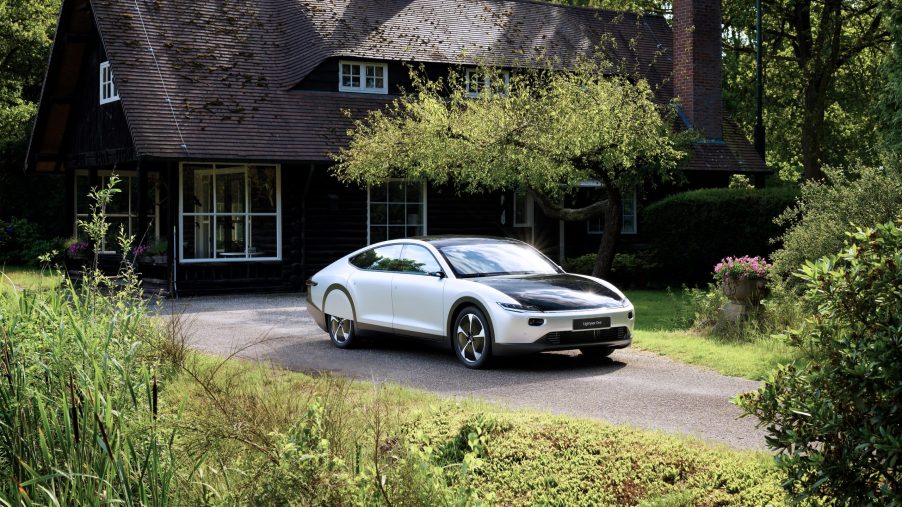
This Solar Electric Car Is as Aerodynamic as the Tesla Roadster
The Tesla Roadster is set to break electric car records, assuming it’s ever produced. It’ll have the longest range of any electric car, at 620 miles per charge. And one of the factors is its coefficient of drag, which sits at just .20. Currently, the Tesla Model S has the lowest coefficient of drag for any production car, at .24. But the Lightyear solar EV matches the Tesla Roadster in terms of aerodynamic efficiency, bringing solar cars to the masses.

The Lightyear One is a five-seater solar electric car
Unlike a traditional EVs, solar electric cars harness the power of the sun, which allows them to charge whenever it’s bright outside. They also utilize tactics, such as low drag, to maximize their range and increase efficiency. Even the CEO of Lucid Motors agrees that motor efficiency is more important than big batteries.
For the Lightyear One, its coefficient of drag is also .20, which helps increase the car’s range. With an estimated range of 450 miles, that’s more than enough to make longer commutes with miles to spare. On top of that, Lightyear claims that the One can get 7 miles back every hour by just sitting in the sun. So if the car is completely dead, it’d take 60 hours, or about a week’s worth of sunlight, to completely charge the car.
Okay, even with the flaws of electric car charging stations, they’d still fill the car with electricity faster than the sun. At a DC fast charger, the car can regain 354 miles in just an hour’s charge. Whether that includes solar charging is unclear, but that’s respectable for an EV of its caliber.
But the Lightyear One solar electric car specializes in being a regular car, not a fancy performance monster.
The Lightyear One will be a regular car, with regular features

For starters, the Lightyear One solar electric car has five seats, so it’s ready to be a family car. It also has ample cargo room, at 27 cubic feet. For perspective, the Toyota Corolla sedan only has 19.1 cubic feet of room. And the Lightyear One will come with features that are commonplace on most cars, such as Apple CarPlay and Android Auto and over-the-air software updates, similar to Tesla and Ford EVs.
Now, being a “normal car” might not sound like much of an achievement. However, in terms of solar electric cars, there are no regular options. A team of brilliant students built the Stella Vita solar RV, but that’s an RV, not a car. And then there’s the Aptera, which only seats two and has a rather unconventional look.
The Aptera solar electric car has the lowest coefficient of drag of any concept car
This odd three-wheeler is shaped like a car of the future, partly because it is. The Aptera solar EV clobbers both the Lightyear One and soon-to-be Tesla Roadster in terms of aerodynamics, with a .13 coefficient of drag. On top of that, this solar electric car can hit 1,000 miles of range per charge, at just $45,000
And while the Lightyear One is a brilliant solar electric car, it’ll only be available in Europe, and it’s set to be an expensive one. At €150,000, or around $175,000, it’ll be priced like the Roadster in order to pave way for more affordable solar electric cars down the line.
Almost every electric car startup is beginning with one or two low volume, high margin cars, such as the Lucid Air. But eventually, these companies will be able to produce cheaper electric vehicles for the average Joe. It’s an up-and-coming technology that will free many from the shackles of EV charging stations. So while electric cars are coming, solar electric cars will be an excellent solution to the problems of charging.


